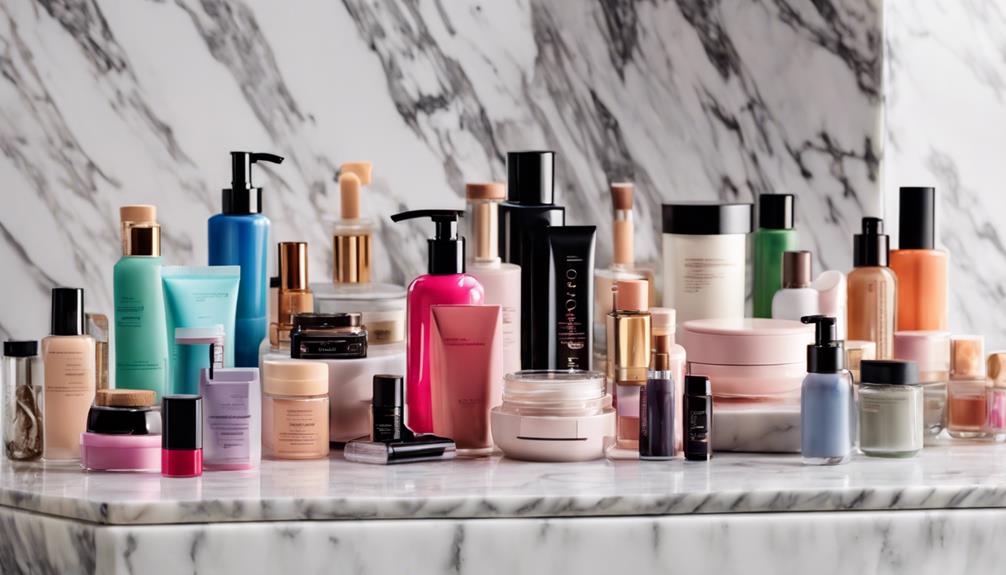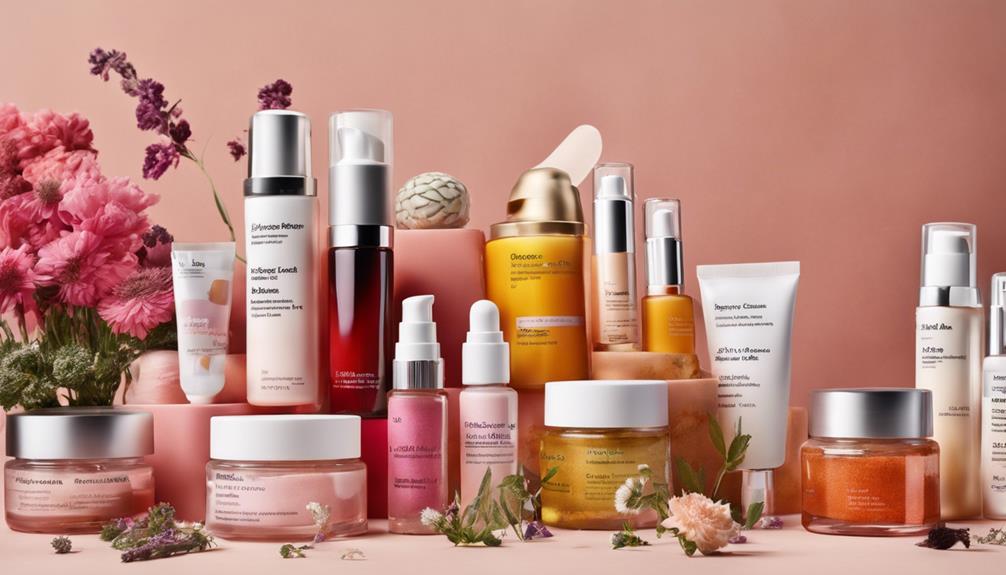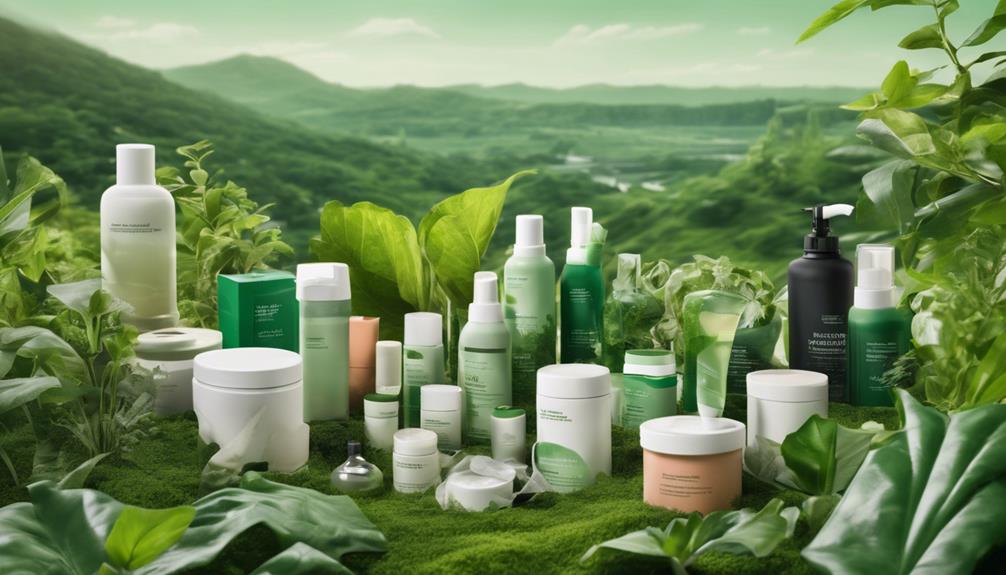
Cosmetic packaging sizes vary for several reasons. You’ll find that consumer preferences influence smaller, travel-friendly options while luxury brands often choose larger, striking designs. Product types also play a role; thicker formulations require sturdier containers. Pricing impacts your choices too, as smaller sizes can enhance perceived value, while larger ones appeal to budget-conscious shoppers. Moreover, sustainability concerns are pushing brands toward eco-friendly packaging that minimizes waste. Each of these factors shapes how brands tailor their packaging solutions. By exploring these relationships, you can gain deeper insights into the cosmetic industry’s packaging dynamics.
Main Points
- Cosmetic packaging sizes vary to cater to diverse consumer preferences, such as sustainability and convenience for on-the-go usage.
- Demographic factors, including age and lifestyle, significantly influence the selection of packaging sizes in the cosmetic market.
- Product type and formulation dictate packaging requirements, with thicker products needing sturdier containers compared to lighter formulations.
- Pricing strategies are influenced by packaging size, where smaller, upscale options enhance perceived value while larger sizes attract cost-conscious buyers.
- Environmental considerations drive the shift towards smaller, eco-friendly packaging, aiming to reduce waste and promote sustainability.
Consumer Preferences and Trends

Consumer preferences in cosmetic packaging sizes have evolved considerably in recent years, driven by factors such as sustainability, convenience, and product efficacy.
The significance of custom vape packaging resonates similarly in both industries, as brands seek to stand out in a saturated market.
You’ll notice that customer demographics play a vital role in shaping these preferences. Younger consumers, for instance, often favor smaller, travel-friendly sizes that promote on-the-go usage. This trend reflects a shift in buying habits, where impulse purchases and sampling become more prevalent.
Furthermore, environmentally conscious customers are increasingly opting for refillable or eco-friendly packaging, which influences brands to adapt their offerings.
As you analyze these trends, consider how demographic factors like age and lifestyle impact purchasing decisions, leading to a demand for diverse packaging sizes that cater to both functionality and sustainability.
Marketing and Branding Strategies
As brands respond to evolving consumer preferences in cosmetic packaging sizes, effective marketing and branding strategies become increasingly important.
Custom packaging, such as custom makeup kit boxes, can elevate a brand’s image while aligning packaging choices with brand identity to resonate with your target demographics.
For instance, luxury brands often opt for larger, visually striking packages that convey exclusivity, while budget-friendly brands might choose smaller, more practical sizes to appeal to cost-conscious consumers.
Understanding your audience’s preferences can help you design packaging that not only attracts attention but also reinforces brand loyalty.
Product Type and Formulation

When selecting cosmetic packaging sizes, the type of product and its formulation play vital roles in determining the ideal dimensions. For instance, products with high viscosity, like creams and gels, often require sturdier packaging to prevent leakage and guarantee easy dispensing.
In contrast, thinner formulations, such as serums or lotions, can be housed in more flexible containers. Furthermore, using custom serum boxes helps to confirm that the packaging is tailored to the specific needs of delicate products, providing both protection and aesthetic appeal.
Moreover, ingredient stability is important; some formulations may degrade if exposed to air or light. Consequently, opaque or airtight packaging can prolong shelf life.
Ultimately, understanding the product type and its specific formulation guides you in choosing the right size and style of packaging, guaranteeing both functionality and product integrity are maintained throughout its lifespan.
Pricing and Value Perception
Selecting the right cosmetic packaging size not only affects functionality but also influences pricing and value perception. When you consider your product, think about these key aspects:
- Luxury Positioning: Smaller, upscale packaging can enhance perceived value, attracting consumers who associate size with premium quality. Furthermore, utilizing custom perfume boxes can further elevate brand image through unique designs and materials that resonate with luxury consumers.
- Cost Efficiency: Larger sizes often reduce the price per unit, appealing to budget-conscious buyers while maintaining brand integrity.
- Market Trends: Consumer preferences shift toward smaller, travel-friendly options, impacting pricing strategies and profitability.
- Brand Image: Consistent packaging sizes can reinforce brand identity, ensuring consumers perceive your products as reliable and valuable.
Balancing these factors helps you optimize pricing strategies while aligning with your brand’s overall positioning in the market.
Environmental Considerations

Environmental sustainability is becoming a critical factor in cosmetic packaging decisions. As a consumer, you may notice brands increasingly adopt sustainability practices, reflecting a commitment to reducing their environmental footprint.
This shift often influences packaging sizes and materials, with many companies focusing on sustainable packaging options that minimize waste and resource use. Smaller, more efficient packaging not only uses fewer resources but also minimizes waste.
Brands are opting for eco-friendly material choices, such as recycled plastics and biodegradable options, which align with consumer demand for greener alternatives.
By prioritizing sustainable packaging, companies can enhance their market appeal while addressing environmental concerns.
In the end, your choices can drive the industry toward more responsible practices, encouraging brands to innovate and adopt environmentally friendly solutions in their packaging designs.

